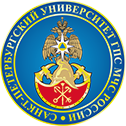Russian Federation
The article considers perspective directions of using computer simulation of evolutionary processes, often called genetic algorithms. The descriptions of genetic algorithms of optimization of functions by combinatorial selection of variants by methods of evolution of living organisms are resulted, which allows to significantly reduce the time of search of optimal solution. Features of tuning neural networks with the help of genetic algorithm when solving problems in which the use of gradient methods for correction of weights of neural network, such as method of inverse propagation of error, are considered It is not possible or relatively ineffective. An example of the use of a genetic algorithm for scheduling activities by minimizing the penalty indicators of the target function is given. Peculiarities of arrangement of equipment with the help of genetic algorithm when solving the problem of optimal location of set of rectangular objects on limited area are considered. The genetic algorithm of fractal compression of graphical information with the purpose of increase of efficiency and provision of protection of graphic information transmission through communication channels is considered.
genetic algorithm, approximation, optimization, adjustment, scheduling, arrangement, compression of information
1. Gelatt C.D. Optimization by simulated annealing // Journal of the ACM. 2015. № 5.
2. Davis L. Handbook of Genetic Algorithms. NY.: Van Nostrand Reinhold, 2019.
3. Baum E., Smith W. On genetic algorithms. NY.: ACM Press, 2015.
4. Michalewitch Z. Genetic Algorithms. Springer-Verlag, 2017.
5. Rutkovskaya D., Pilin'skij M., Rutkovskij L. Nejronnye seti, geneticheskie algoritmy i nechetkie sistemy. M.: Goryachaya liniya-Telekom, 2018.
6. Baluja S. Genetic algorithms and search statistics. MA.: MIT Press, 2014.
7. Shcherbakov O.V., Labinskij A.Yu. Osobennosti ispol'zovaniya komp'yuternoj simulyacii evolyucionnyh processov // Problemy upravleniya riskami v tekhnosfere. 2017. № 4. S. 82-89.
8. Labinskij A.Yu. Mnogoparametricheskaya optimizaciya s pomoshch'yu geneticheskogo algoritma // Prirodnye i tekhnogennye riski. 2020. № 2 (34). S. 4-11.
9. Labinskij A.Yu. Ispol'zovanie geneticheskogo algoritma dlya mnogokriterial'noj optimizacii // Prirodnye i tekhnogennye riski. 2018. № 4 (28). S. 5-8.
10. Denisenko V.A. PID-regulyatory: principy postroeniya i modifikacii // Sovremennye tekhnologii avtomatizacii. 2007. № 1. S. 78-88.
11. Paklin N.V. Obuchenie nejronnoj seti geneticheskim algoritmom. Tomsk: TPU, 2018.
12. Astahova I.F., Firas A.M. Sostavlenie raspisanij uchebnyh zanyatij na osnove geneticheskogo algoritma // Vestnik Voronezhskogo gos. un-ta. Ser.: Sistemnyj analiz i informacionnye tekhnologii. 2013. № 2. S. 93-99.
13. Labinskij A.Yu. Osobennosti fraktal'nogo szhatiya izobrazhenij // Prirodnye i tekhnogennye riski. 2018. № 2 (26). S. 5-12.
14. Pereguda S. Algoritmy fraktal'nogo szhatiya izobrazhenij. M.: LAMBERT, 2017.






